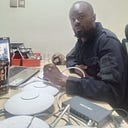Simulated Occupancy: Home Automation and Security
In terms of home security, “simulated occupancy” or “presence simulation” refers to the practice of mimicking or reproducing typical household activities and occurrences, even in situations where no real people are present to carry them out or have any influence over them.
It’s a security feature that utilizes a slew of smart home functions, such as smart lighting, where lights can be programmed to turn on and off at irregular times in different rooms to mimic human activity. They can be programmed to turn on and off intermittently and even cast shadows on walls, so someone studying the house from a distance would have a hard time concluding that these series of actions are pre-programmed events.
Other automated functions include automatically drawing the curtains and blinds, turning the radio on and off, varying the volume, and so on. There are even stand-alone gadgets sold specifically to create the illusion of occupancy, such as the FakeTV gadget, which makes hazy flickering lights that, from the outside, make it look like someone is watching TV.
Working in concert with other security systems, such as burglar alarms and security cameras, lights inside the house can be programmed to turn on when movement is detected in the yard or front door. Even security cameras can be programmed to let out a pre-recorded warning sound or voice.
Several home automation providers and vendors have developed and incorporated such functions into their wares, such as Control4’s Mockupancy.
The main purpose of all this is deterrence, since opportunist burglars are prone to avoid homes where they think people might be present. For consistency and plausibility, simulated occupancy can be programmed to operate day and night. In the morning, the curtains and blinds can be drawn, the radio and sprinklers turned on, and so forth.
It can be helpful for people who live alone and tend to travel a lot, leaving the house vacant, or for families out on vacation. And even if someone walks onto the front door and rings the bell, the homeowner would be notified via phone, and they could observe and speak to the person at the front door, or even go as far as remotely unlocking the door.
Having said that, effective security is multi-layered, and the physical components of any security system — doors, windows, and locks — should come first in the architecture and design of any decent security system.
Security warning signs, motion sensors, sirens, and other detection and deterrent features would subsequently be added to complement and enhance the main physical systems.
